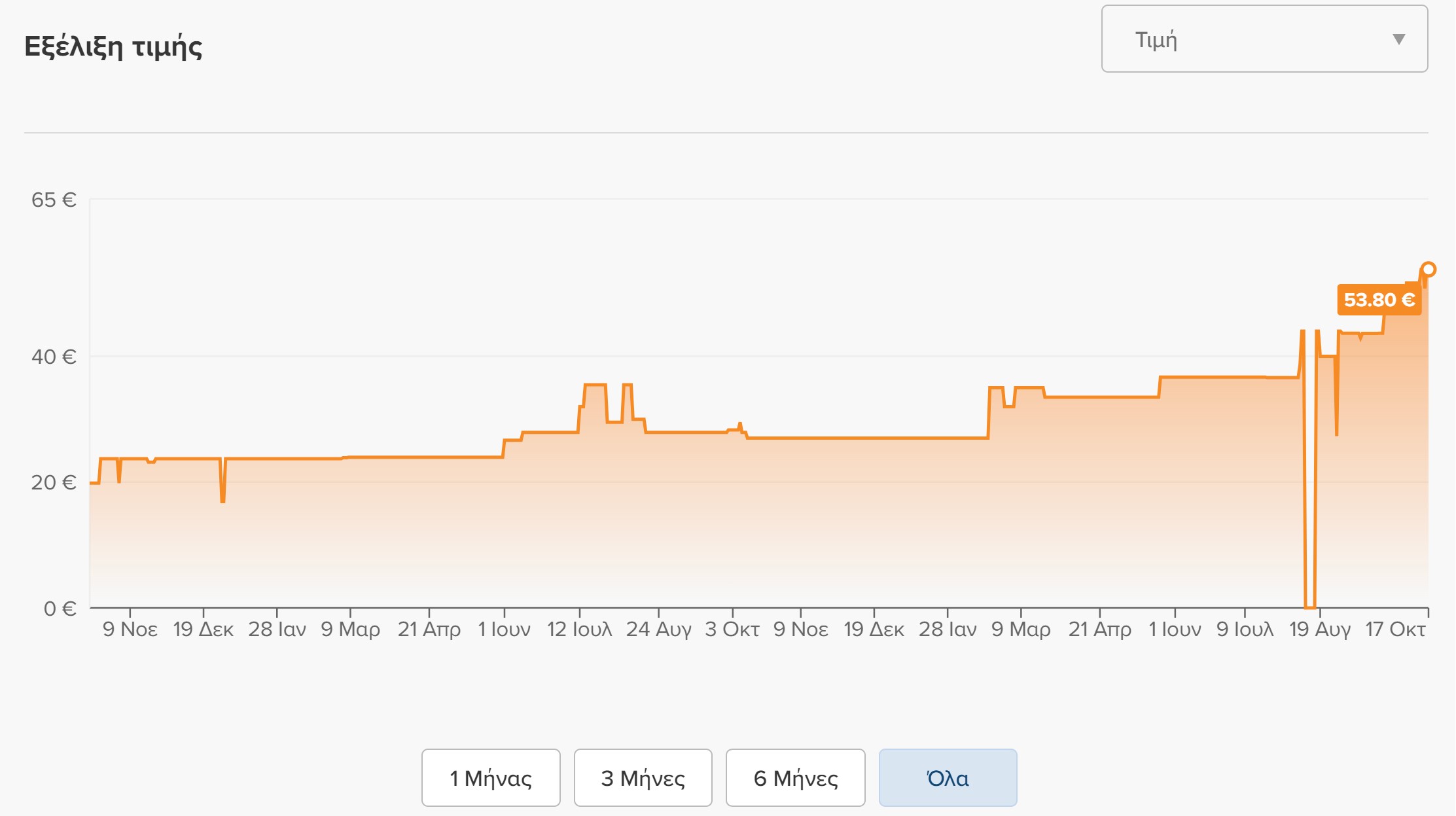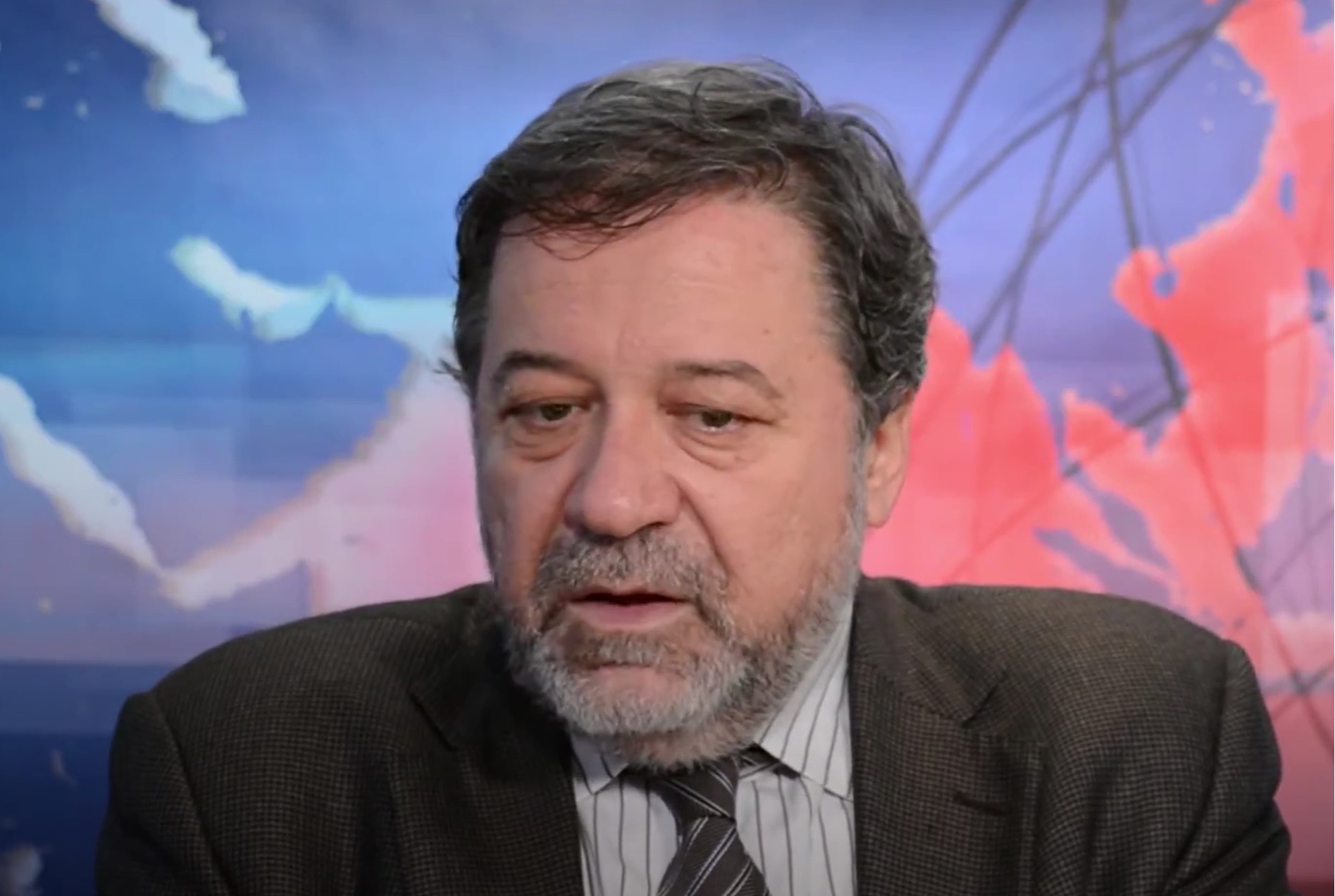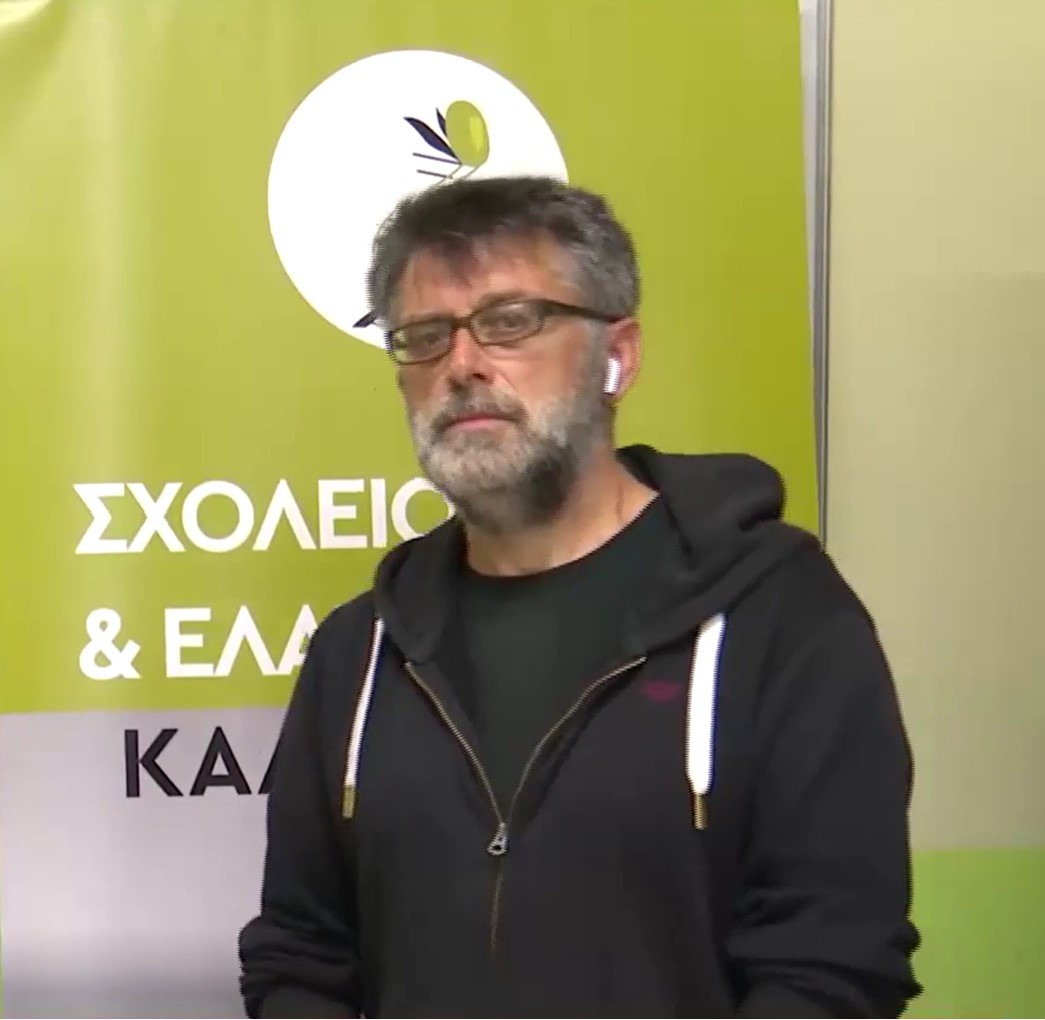- The correlation of the variations with other oil-producing countries in Europe and North America is not very clear – What are the prices per country today?
- The “stages” of the entire chain from the moment the oil leaves the producer until it reaches the supermarkets.
- “Stocked” oils from last year’s crop are being marketed at this year’s increased prices.
- The General Director of SEVITEL, George Economou, and the chemist and president of the School of Olive and Olive Oil in Kalamata, Nikos Koutsoukos, speak
to Data Journalists
A simple visit to any local supermarket is enough for every citizen to see that the price of olive oil has shot up to 11-13.5 euros per liter. A search on a well-known platform for one of the most popular brands of packaged olive oil in our country easily demonstrates the rally. This frantic price race is considered unprecedented even for professionals who have been in the industry for 30-40 years.
On October 18, 2021, a 4-liter package of extra virgin olive oil cost €19.83. The same quantity of the same brand was sold on October 18, 2022, for 26.99 euros. Today it costs 53.8 euros. Similar increases are found in all brands.

The rally seems to have started in February 2023, when the 4-liter package suddenly jumped from 27 to 35 euros. Since then, prices have continued to rise steadily.
The Data Journalists survey had two objectives. To explain the causes of the price of olive oil and to answer a legitimate question: How is it possible that the same oil from last year’s production can still have such fluctuations to this day?
At the beginning of the year, olive oil was leaving the producer for 4 euros per liter and the consumer was buying it in the supermarket for 8 euros. However, it is the oil of the same – last year’s – production that is now leaving the producer at EUR 8 to reach retail prices of EUR 11-13.5.
Talking to people throughout the Greek olive oil chain, the common conclusion is that the spiral started with bad forecasts, just before spring, for Spanish olive oil. The negative estimates for this year’s production of Europe’s top oil-producing powerhouse and the simultaneous reduction of last year’s stocks caused fear to spread to other Mediterranean countries.
The price increase, initially from the olive oil superpower Spain, shook the whole informal oil “stock market”. Since then, it seems that control has been lost. The concern immediately hit the first link, the producers. The other links in the chain followed, with the last one being the recipient of the product, the consumer.

Nikos Koutsoukos is a Chemist MSc, Quality Consultant for the Olive Sector, and President of the Kalamata Olive & Olive Oil School, hosted at the Chamber of Messenia, with the assistance of the Peloponnese Region. “The producer price last year at this time was roughly, 4 euros and at the moment it is close to 8. We have an increase in costs to the producer, of 100%. Everybody is getting pieces of this increase. For example, the worker who used to get 45-50, will get 60-65 euros. Agricultural occupations are now with the new cost scales. That is, the costs of the producer are also going up because the whole system is trying to take advantage of this situation,” he says, adding:
“There is a cycle after the production of olive oil, and we always refer to extra virgin olive oil. A large part is left for personal consumption. A part of the olive oil that will be available goes through a cycle of the trader and the standardizer. The trader will either give it internally for standardization, or abroad. Depending on what is in his interest. The producer initially sells part of the production to cover his costs. It is not possible to have everything in stock”.

George Economou: Some people took care or foresaw or speculated and kept quantities
For our investigation we also contacted the Director General of the Association of Greek Olive Oil Standardization Industries (SEVITEL), George Economou:
“Those who had olive oil in February-March-April were certainly not the standardizers. They were the traders, some large producers, cooperatives, and oil mills. When the situation was formed, and they saw the shortage of supply from other countries and that stocks were starting to run out in Spain and Italy, some took care of, predicted, or speculated and reserved quantities. Since they did not sell them, they anticipated the prospect of a price increase. Of course, they could have made a mistake. They could even now if Spain’s production improved and we were overflowing with oil, the price could drop back to 4 euros.
Mr. Oikonomou refers to information he has gathered recently: “According to the information I have, there are some large-scale producers who say, “I have 20 tons in the warehouse, whoever gives me 10 euros, tomorrow I will load it.” When someone has the product and doesn’t need to liquidate it, they will seek buyers. They will push for it. It all depends on how much the other party needs it. And who is the other party? Some big companies that have signed contracts in third countries, and if they don’t fulfill them, there are clauses.”
George Economou’s Interview with Data Journalists
Current prices, imports, and exports
Greece is consistently in the top 5 in world olive oil production. The other “strong” countries are Italy, Spain, Morocco, and Tunisia, followed by Portugal. Turkey is now also considered to be on the rise. All oil-producing countries seem to be facing the same problem.
In Spain, extra virgin olive oil now leaves the producer with a price of 8.15 euros, in Italy, it has reached 8.70 euros, in Tunisia 7.90 euros, while in our country it is close to or just above 8 euros.
“It is a pity that this issue has been the subject of political controversy. It is a sector that is not oligopolistic. If it was oligopolistic, I would say that a circuit would have worked,” says the Director General of SEVITEL: “What is certain is that what has happened is unprecedented. It’s a coincidence starting from Spain, the country with the largest production. Only 3% of the world’s production of fats concerns olive oil. The quantity is not that big. When this decreases further and happens not to be in stock, then such a situation will arise. Sooner or later, the situation will normalize.
Mr. Oikonomou discusses three scenarios of possible solutions that, nevertheless, face difficulties: ‘Imports from third countries could be allowed. However, a process is needed there. And the ministry will always complicate it. Secondly, the export ban. This cannot be done either. Turkey has done it, Tunisia announced it these days and Morocco is following suit to protect domestic consumption. Within the EU, however, it is not easy to put such barriers to free trade. The third thing that has been mentioned is to introduce a price. How do you do pricing? And at what level? In the final phase? Who is going to prohibit the producer from selling it at a certain price?”

Nikos Koutsoukos: Myth that we are re-importing olive oil
News or scenarios about the re-importation of Greek olive oil from Italy are often circulated in the media. Nikos Koutsoukos speaks of a myth:
“It is a myth that in Greece we are re-importing olive oil from Italy, which was originally given from our own production. We have no reason to import olive oil. If we do, it will be in isolation and momentarily since there is a shortage. We always have a surplus, though. Even in a bad year, we don’t buy from outside. Greek olive oils go to Italy and some to Spain. But the oil doesn’t come back here.”
As he explains, “Olive oil in Italy is more expensive than in Greece. It is not in our interest to buy a more expensive olive oil. It doesn’t make sense. What are they doing? Because our oils have a specific profile and are very good to move either independently or with other oils of their own, they have the markets and they channel them. The Italians operate more commercially. They source from Spaniards, Tunisians, and Portuguese. These are in the context of trade.
Nikos Koutsoukos’ Interview with Data Journalists
Regarding this year’s harvest, he emphasizes: “We don’t have a shortage of olive oil in Greece. Even now that we know it’s a difficult year, there are some olive oils left from previous years. We will be lucky if we have half the production of last year, around 150,000 tons. So, with slightly lower consumption due to the product becoming more expensive, almost half of the production will be left for export”.
Our country usually produces 300-350,000 tons per year. 100,000 of these are channeled to domestic consumption.
We asked him about the price fluctuation: “The year as it starts always has a forecast. Like in the stock market. And you move accordingly. This year olive oil can have a different price every week. This is not healthy for the product. The markets want something more stable. We started at 4 euros flat – flat last September, around Christmas it was around 4.80-5 euros in the middle of the olive season.
… Then, in January 2023, we started to see the predictions of the new season, especially in Spain, which is the big player. In the spring all the new year production forecasts were revised downwards. In fact, after the previous one which was already bad. That in itself feeds back bigger increases. Around Easter, we were already at 6 euros. Everyone was scared. Spain will have a lower production because of the weather, mainly because of the drought and the conditions when the fruit was binding. In the summer it went up to 7 euros and in July we were close to 8 euros to the producer”.
The answer to the crucial question

On the crucial question of whether a wholesaler or a large supermarket could have taken last year’s olive oil for 5 euros early and sell it now as if he had bought it for 8, the president of the School of Olive and Olive Oil in Kalamata tells us:
“In theory, it could happen, but I don’t think it does. The cost of money is too high. Because if someone was buying 100 tons with 500,000 euros, now he needs capital of 1 million euros. We have a lot of parameters that come in. I don’t think anybody would risk like that. In retail, it is very difficult. A dealer who already has oils could individually do something like that, but it’s still difficult. This time last year no one could have predicted that prices would rise so much this year to act like this. Because there had to be a double bad coincidence for this to happen. You have, that is, a year that was bad, 2022, and also a bad forecast for 2023”.
We asked the same question to Mr. Economou: “Without being seen as simply protecting the standardization industry, standardization companies are not allowed to stock up. The warehouses do not exist and that is not their role. They buy in stages to meet one and a half months’ worth of obligations. We are talking, after all, about small quantities. The large quantities are sold in January – February, when the oil is being produced. The exports have also been made. Spaniards and Italians took our oils in the first stage. No one could have predicted then what would happen. It was the necessity that drove them. Now, whoever has oil does not give it away easily. It’s the uncertainty that’s driving all that’s happening. Did anyone foresee a bad winter or then such fires in Evros where we had olive trees there too, or the floods in Larissa?”
Those involved from production, until the product is standardized and ready for the consumer in the supermarket, are the producer, the oil mill that may or may not trade the oil, the intermediary, and the standardization process.









Discussion about this post